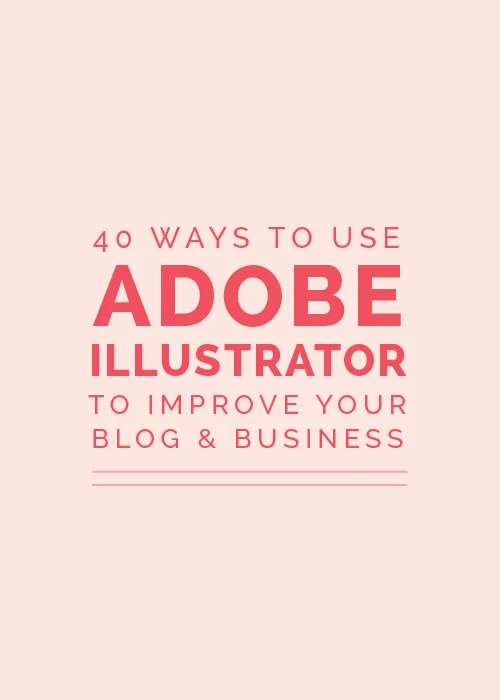What is branding?
If you type that question into Google's search engine, there's a good chance you'll get some lofty, vague answers. For example:
- "It's about saying you are who you say you are." (Wait, what?)
- "Branding is defining a distinctive set of characteristics and crafting stories across a variety of mediums that communicate and contextualize those characteristics in vague and immersive ways." (Simple English, please.)
- "Branding is uncovering a human truth and then creating something that speaks to that truth." (What does that even mean?)
Although some people try to get deep and philosophical on the meaning of the term "brand", the definition doesn't have to be so complicated. A business's brand is their identity. Branding provides customers with an experience through visual communication (logo, design, marketing materials, website) and subliminal messaging (mission statement, atmosphere, customer service).
But you know this already. For example:
It's Monday morning. Your boss scheduled an early morning staff meeting at the office, so you decide that one less hour of sleep is a good excuse for a grande 2-pump nonfat vanilla latte. When you enter store, you're greeted by the sounds and smells of coffee brewing and that friendly young man in a green apron who always remembers your signature beverage. He smiles at you while he writes your name on a white paper cup, and you use your iPhone app to pay. A minute later your name is called, you slip your full cup in a brown cardboard sleeve, and you're out the door with plenty of time left to get to your meeting.
You probably picked up on the popular coffee chain I was referencing, but notice that I never mentioned the name once. The Starbucks brand is successful because they provide customers with distinct associations, both visually and subliminally. Green aprons, custom beverages, friendly staff, white paper cups, brown cardboard sleeves. They even have their own special names for drink sizes. Their brand is much more than just a logo; it's an experience.
Why is branding important?
The benefits of branding are numerous. While I could go on for hours answering this question, I'll spare you the time and touch on the most important ones.
- Memorability - If customers can't remember your business, they won't return to it. A cohesive brand identity provides your customers with a memorable experience that will differentiate your business from its competitors.
- User loyalty - When people have a positive experience with a memorable brand, they're more likely to be repeat customers.
- Consistency - A brand provides a framework to maintain consistency across all facets of a business. It ties together your business cards, website, product packaging, Facebook cover image, even your email signature.
- Credibility - A successful brand establishes credibility by showing concern for the well-being of their customers. This can be mirrored and displayed in showing concern for all of the visual and non-visual details of your business.
- Familiarity - Branding has an effect on a business's non-customers, too. People who have encountered your business on social media, advertisements, and other outlets are more likely to recommend you to others, even if they haven't experienced your business firsthand.
- Personality - A brand adds personality to your business by giving it a consistent set of traits. For example, the personality of the Levi's brand is rough, tough, outdoorsy, and athletic while the personality of the Downy brand is soft, family-oriented, and cheerful.
- Quality - Your brand is always sending a message to your potential customers, whether you realize it or not. A thoughtful, well-designed brand gives off a message of quality and intent. But a pieced-together, inconsistent brand could be sending people the message that you haven't put much thought into the details.
- Clarity - A potential customer's attention span is low, and you don't have long to catch a buyer's eye. A successful brand gives people a concise, accurate definition of your business in a short amount of time.
- Visibility - Colors, logos, font-choices, patterns, and other distinctive visual elements of a brand give customers images to associate with your business. You can picture the logos and colors of successful brands without thinking twice: Coca Cola, Apple, McDonalds, to name a few.
- Stability - When your logo, marketing materials, and online presence is ever-changing, chances are your business is, too. A consistent, cohesive brand reflects stability.
Are you in need of a rebrand?
A strong brand allows you to build an intentional, successful business by attracting the clients you want. Investing in great design will separate you from competitors, create a professional visual presence, and maintain consistency across all platforms of your business. Branding is much more than a logo; each and every detail should be distinctly you.
In order to have a cohesive brand, I believe it's important to work through both the visual aspects of your brand as well as the non-visual. As a designer, I have the education and experience to provide you with a visual representation of your business and help you work through streamlining every detail. And as a business owner, I understand and appreciate the time and heart you've poured into your business. Let's reflect your hard work through a beautiful, meaningful brand.
For more details on pricing and the Elle & Company branding process, click here.
Are you interested in working together? Visit the contact page. I can't wait to hear from you!


















